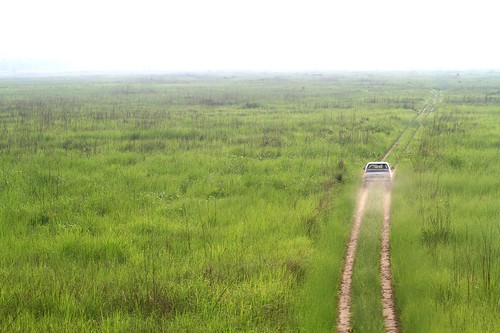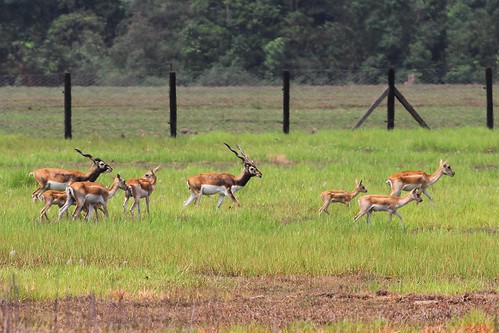Published on 4th Dec 2013 on Kathmandu Post - a popular English daily in Nepal.
http://www.ekantipur.com/the-kathmandu-post/2013/12/03/editorial/keeping-it-in-the-community/256517.html
http://www.ekantipur.com/the-kathmandu-post/2013/12/03/editorial/keeping-it-in-the-community/256517.html
In the recently concluded Constituent Assembly election, we
witnessed the public rising against all odds to vote. The outcome was a
historic, record high turnout. A great lesson to be learned indeed, and we have
seen this time and again—when people come together with a strong sense of duty
and ownership, nothing is beyond reach. Meanwhile, a similar scenario, but on a
smaller scale and in the field of conservation, is taking place in Nawalparasi.
Imagine hunting a near threatened animal as a traditional
practice for food and realising one fine day that the practice is wrong. This
is what happened in a few VDCs of Nawalparasi district: Deurali, Naram,
Ruchang, Dhaubadi and Hupsekot. Communities came together and decided to
protect the Himalayan goral (Nemorhedus goral), demonstrating strong local
stewardship and engagement in conserving a vulnerable species. The Himalayan
goral is popularly called ghoral in Nepali. It is a goat-antelope, with a short
tail, backward-pointing horns and a grey coloured coat with a white bib. The
shy natured goral can be found foraging and sheltering on the rocky faces of
mountains. The goral population has been notably declining due to hunting and
habitat loss; it is listed as a near threatened species on the International
Union for Conservation of Nature (IUCN) National Red List.
Protecting gorals
The Magar communities in these Nawalparasi villages have
been hunting goral for a long time. Jhabilal Ranamager, a local from Dhaubadi
VDC, says, “When we hunted goral, the studier ones always got away and those
that got killed were the pregnant, sick and old goral. What moved us was to
find an infant inside the carcass almost all the time. It made us feel guilty
and cold-blooded.” This realisation motivated the villagers of Dhaubadi VDC to
call a meeting with the elders. What came out of this meeting was a decision to
protect the goral and motivate surrounding VDCs to join their cause. It has
been almost five years now since the five VDCs in Nawalparasi came together to
form a committee to conserve goral and their habitat. The villagers now want to
establish the five VDCs, including key goral habitats, as a community-based
goral conservation area.
Since there has been no thorough study on the goral
population in Nepal, the exact population status is hard to determine. However,
a population of around 100 goral is estimated to be in the Mahabharat lekh
(high land) of Nawalparasi and Palpa districts. A recent study commissioned by the
USAID-funded Hariyo Ban Program in the Chitwan Annapurna Landscape identifies
the Nawalparasi area and adjoining VDCs in Palpa district as playing a crucial
role in maintaining forest connectivity between Chitwan National Park in the
lowland Tarai and the Annapurna Conservation Area in the hill region to the
north. The area is connected to Chitwan National Park through forest corridors
from the south (Pithauli forests), in the east through contiguous forest (up to
Gaidakot in the east) and in the west (Daunne forest area). Protecting goral
will involve conserving their habitat, and thereby, benefitting other animal
species as well as by maintaining the north-south forest connectivity.
Safeguarding forest connectivity is particularly important in the context of
increasing temperatures and environmental change. Such forest linkages will
play a crucial role in long-term biodiversity conservation and build resilience
to climate change in Nepal.
Bottom-up
conservation
The traditional conservation approach in Nepal was to
establish a protected area, often relocating local people outside the park
boundaries. However, now, there are a wider variety of approaches, as
demonstrated by Nepal’s conservation areas and community forests. If these VDCs
of Nawalparasi are established as community-based conservation area then a
large swathe of land will be protected with local stewardship, integrating
social and environmental priorities. Current community managed conservation can
be seen in the Kanchenjunga Conservation Area, which was handed over by the
Government of Nepal to the Kanchenjunga Conservation Area Management Council in
August 2006. However, in the Kanchenjunga case, a policy was first outlined
before the handover, while the five VDCs in Nawalparasi, if declared a
community-based conservation area, will be Nepal’s first initiative that
started from the ground-up, leading to policy formulation.
Biodiversity expert Shant Raj Jnawali says, “There is no
provision for community managed conservation areas in Nepal’s policy where the
community has a full stake. Given the livelihood options in this area, if this
is recognised as a community-based goral conservation area, then it can be
promoted as an eco-tourism site. Chitwan attracts half a million visitors a
year; if this area can attract even a small portion of that number, it will
have a positive impact on local livelihoods.”
History has proven time and again that people have great
power and this stays true for conservation. Prior conservation efforts were
successful because of the involvement of communities. Thakur Bhandari, National
Committee member of the Federation of Community Forestry Users Nepal (FECOFUN),
says, “The provision of community conservation areas in Nepal needs to ensure
that the full right to conservation, management and utilisation of the
resources are with the communities. And, it should not be declared a community
conservation area against people’s wish.”
The initiative taken by the people of Nawalparasi came from
sentiment and a new sensibility to contribute to conservation. It is important
to note that it was self-initiated and without any external help. Such efforts
to establish community conservation areas could provide solutions to many
conservation problems in Nepal today. They could help build functional links
between livelihood security and conservation, and help bring communities into
the mainstream of conservation. In a time of globalisation, this needs to be
acknowledged and prioritised in government conservation policies. If a
supportive environment is created for such initiatives, taking small steps one
at a time, it can perhaps develop into a massive community-based conservation
movement in the country.
The views
expressed here are personal.














